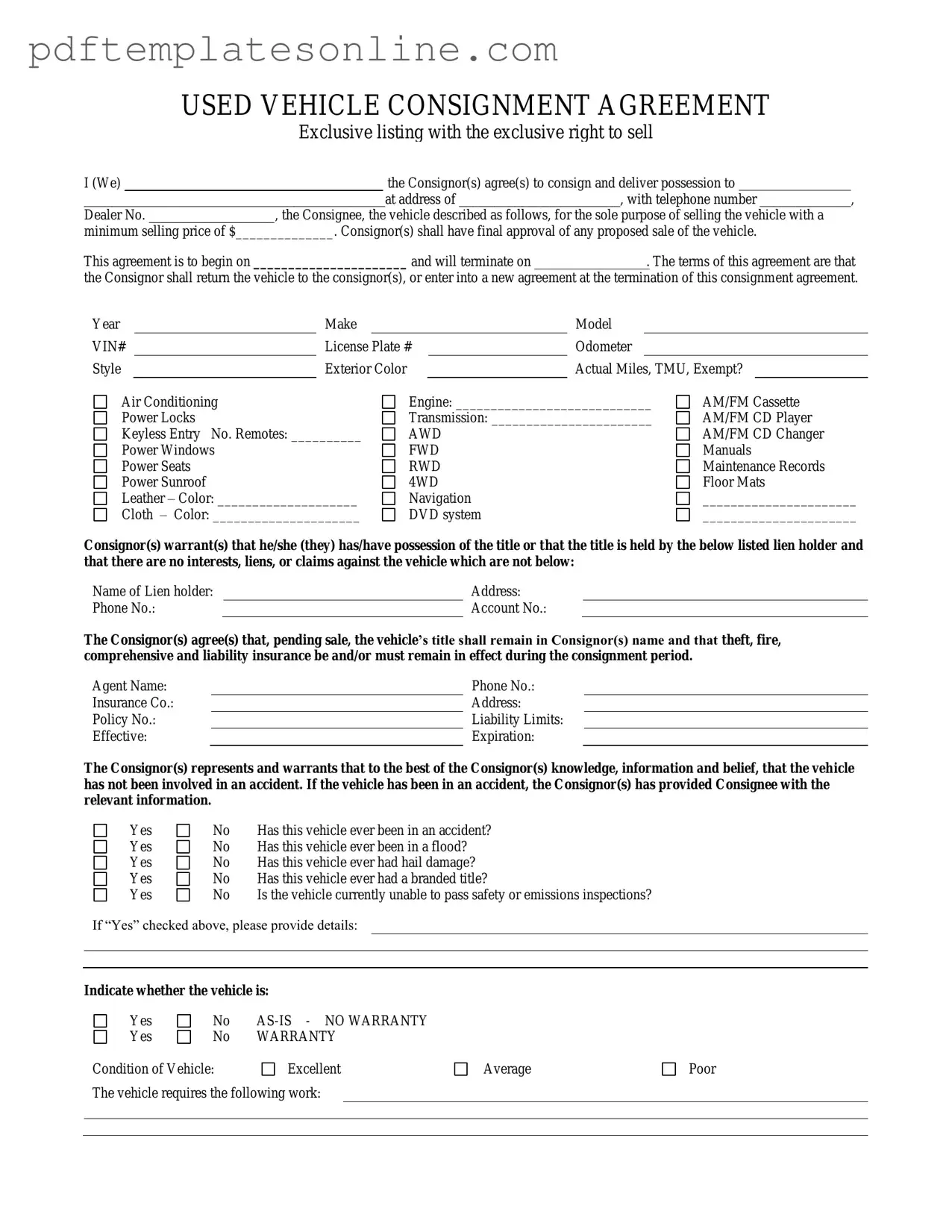Filling out a Car Consignment form is a crucial step in selling a vehicle. However, many individuals make common mistakes that can lead to complications down the road. Understanding these pitfalls can help ensure a smoother process.
One frequent error is failing to provide complete information. Incomplete details about the vehicle, such as the VIN, make, model, and mileage, can create confusion. This lack of clarity may lead to disputes later regarding the vehicle’s condition or history. Each section of the form should be filled out thoroughly to avoid misunderstandings.
Another mistake involves neglecting to specify the minimum selling price. Without this information, the Consignee may not have clear guidelines on how to proceed with the sale. Setting a minimum price helps protect the Consignor's interests and ensures that the vehicle is not sold for less than its worth.
Many people also overlook the importance of accurate contact information. Providing incorrect phone numbers or addresses can hinder communication between the Consignor and Consignee. This can delay the sale or lead to missed opportunities, so double-checking this information is essential.
Some individuals fail to disclose any existing liens on the vehicle. This omission can create legal issues, as the Consignee must be aware of any financial obligations tied to the vehicle. Transparency about liens helps build trust and prevents potential legal complications.
Another common mistake is not indicating the vehicle's condition accurately. Misrepresenting the condition can lead to disputes and dissatisfaction from potential buyers. It is crucial to provide an honest assessment of the vehicle's state to avoid future liabilities.
People often forget to read the agreement thoroughly before signing. This oversight can result in unexpected obligations or misunderstandings about the commission structure. Taking the time to review the terms ensures that all parties are on the same page regarding their responsibilities.
Additionally, failing to provide insurance details can leave the Consignor vulnerable. During the consignment period, the vehicle should be insured against theft or damage. Not including this information can lead to complications if something happens to the vehicle while in the Consignee's possession.
Some individuals make the mistake of not specifying the notice period required for vehicle removal. This detail is important to avoid confusion about when and how the vehicle can be retrieved. Clearly outlining this information helps prevent misunderstandings and ensures a smoother process.
Lastly, many overlook the significance of keeping copies of all documents related to the consignment. Having a personal record of the agreement, any communications, and documentation can be invaluable if disputes arise. Always retain copies for personal reference.
By being aware of these common mistakes, individuals can navigate the Car Consignment process more effectively, ensuring a successful sale of their vehicle.
